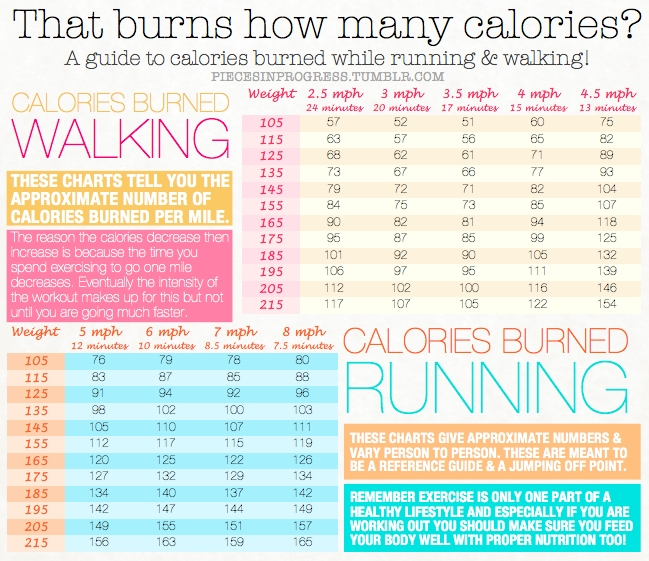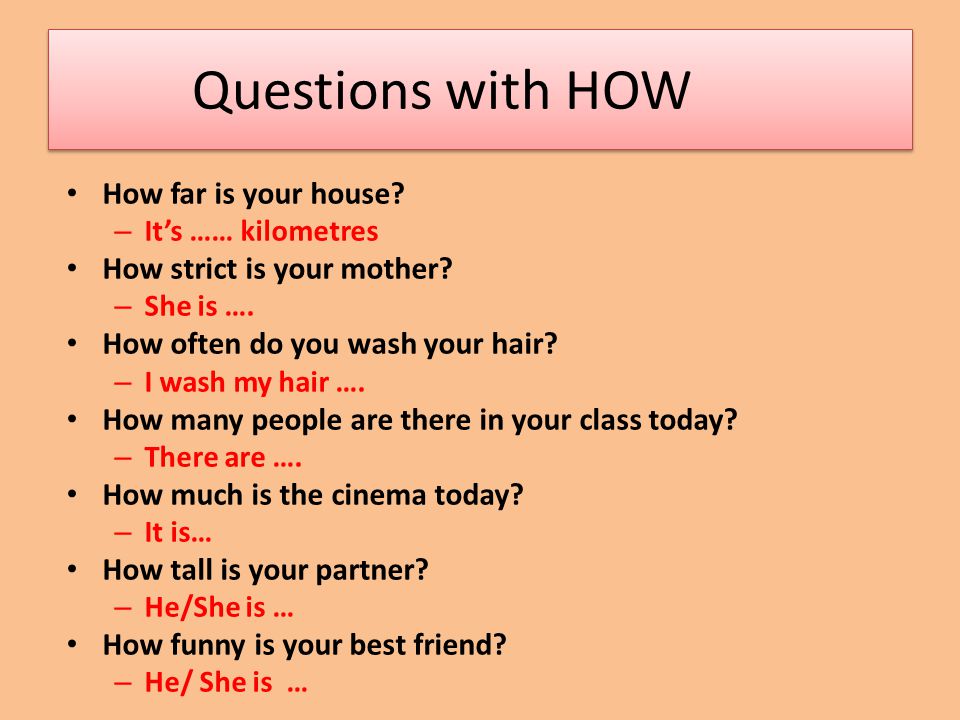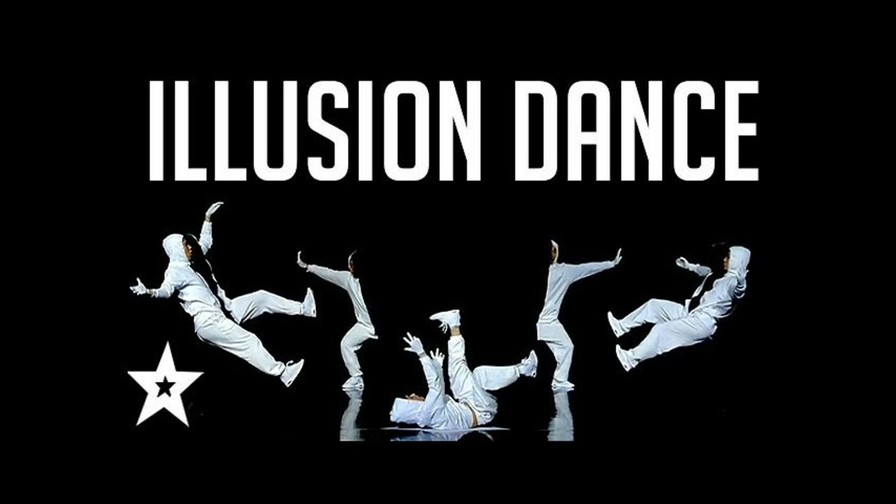How to dress for a swing dance
What to Wear for Swing Dancing
“What should I wear for swing dancing?” It’s one of most common questions I’ve seen from new dancers. After all, when learning ballet, tap, or other dances there’s usually some sort of dress code. For swing dancing, a lot of people picture poodle skirts or rockabilly outfits. That might be true in the Boogie Woogie or other dances that originated in the 1950s. However, swing dancing isn’t a single monolithic dance. It can include Lindy hop, Charleston, Balboa, the many shag dances, and more! Just like swing dancing isn’t only one thing, there isn’t just one way to dress for dancing. Swing dancing is also about self-expression and the lack of a firm dress code really lets you include what you wear in that self expression.
You probably won’t see many poodle skirts outside of Halloween dances in the Lindy and Balboa scenes.In this post, I’m going to do my best to give you some general advice for what to wear for swing dancing. You also won’t see much gendered language in this article because a lot of clothing advice applies to any swing dancer regardless of gender or gender expression.
Advertisement
A special shout out to all my swing dancing Facebook friends who contributed their advice to their article!
Clothing: General TipsWhen dressing for swing dancing I have two main goals:
- Clothes that will keep me cool enough to keep dancing through the night or during lessons
- Clothes that will make me feel comfortable and confident on the dance floor
For goal #1, aim for clothes made from breathable, natural fabrics like cotton or linen blends. If you prefer sleeve-less shirts or dresses like I do, you might be able to get away with synthetic fabrics without overheating. If you’re going to an even where you’re going to be dancing for hours and hours, it’s also a good idea to bring a spare shirt or dress so you can change if you get too sweaty.
Advertisement
For goal #2, that may include choosing clothes that look nice (specifically when going to evening dances).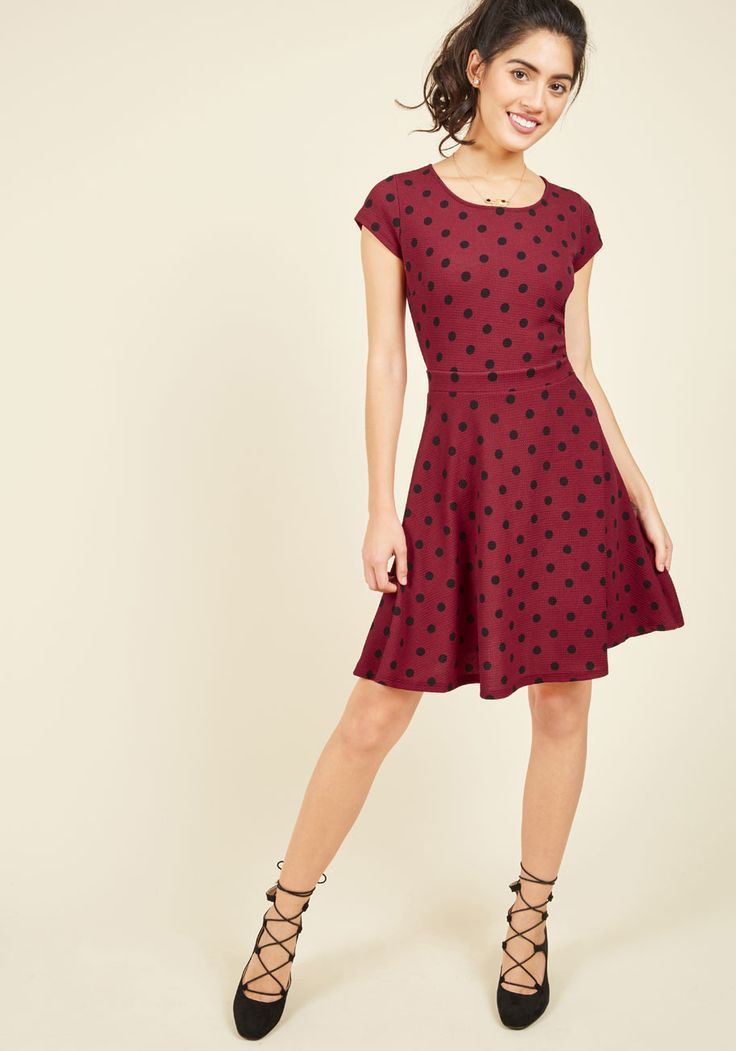 More importantly, you want clothes that give you a full range of motion and that aren’t distracting to yourself or your partner. Avoid overly constrictive shirts that prevent you from moving your arms or tight pants that may get ripped in the course of a dance (I’ve seen it happen).
More importantly, you want clothes that give you a full range of motion and that aren’t distracting to yourself or your partner. Avoid overly constrictive shirts that prevent you from moving your arms or tight pants that may get ripped in the course of a dance (I’ve seen it happen).
Champion shorts from Target
Twirly skirts, while fun, can also be distracting to yourself and your partner depending on how much they fan out. That said, you don’t have to completely avoid twirly skits. Wearing “dance shorts” under skirts, dresses, and kilts will allow you to dance carefree. My personal favorites are the Champion shorts found at Target, but there are also plenty of cuter options out there. You just have to find a pair that works underneath the skirts you plan to wear.
Clothing: Lessons and Outdoor DancesLessons and most outdoor dances tend to be very casual. As long as the temperature is not super hot I tend to wear jeans whereas other dancers refuse to wear jeans for dancing.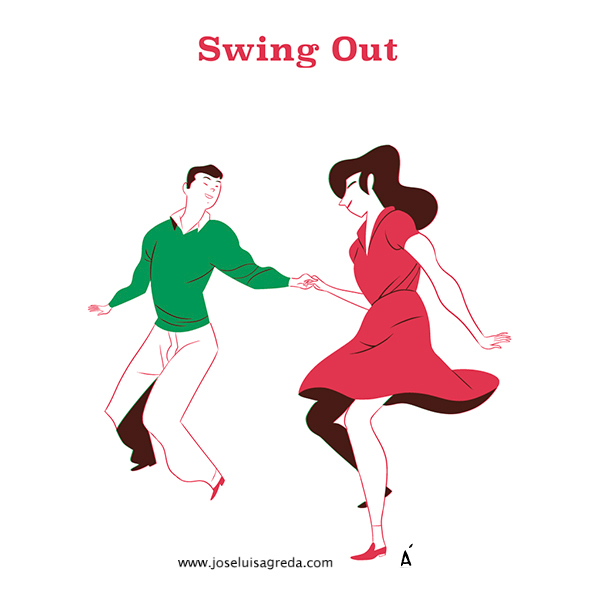 It just depends on what you’re comfortable with. But be careful of athletic wear. While you want to stay cool, you don’t want to wear clothing that will wick all the sweat from your skin because then your partner is going to feel that when they connect with you for a dance.
It just depends on what you’re comfortable with. But be careful of athletic wear. While you want to stay cool, you don’t want to wear clothing that will wick all the sweat from your skin because then your partner is going to feel that when they connect with you for a dance.
At lessons, a lot of dancers represent their home scene and favorite events with t-shirts. My current favorite shirt for winter lessons is a ¾ sleeve t-shirt from Hepcat Corner. I’m usually pretty cold when I get to the venue in the winter, but I also know I’ll warm up once I start dancing. A light-weight t-shirt with longer sleeves can help balance the need to stay warm when you’re not moving and the need to stay cool when you’re dancing.
My friend Krista who runs Hepcat Corner has even agreed to give my readers a 10% discount at her store if you use the code RoamingLindyHopper.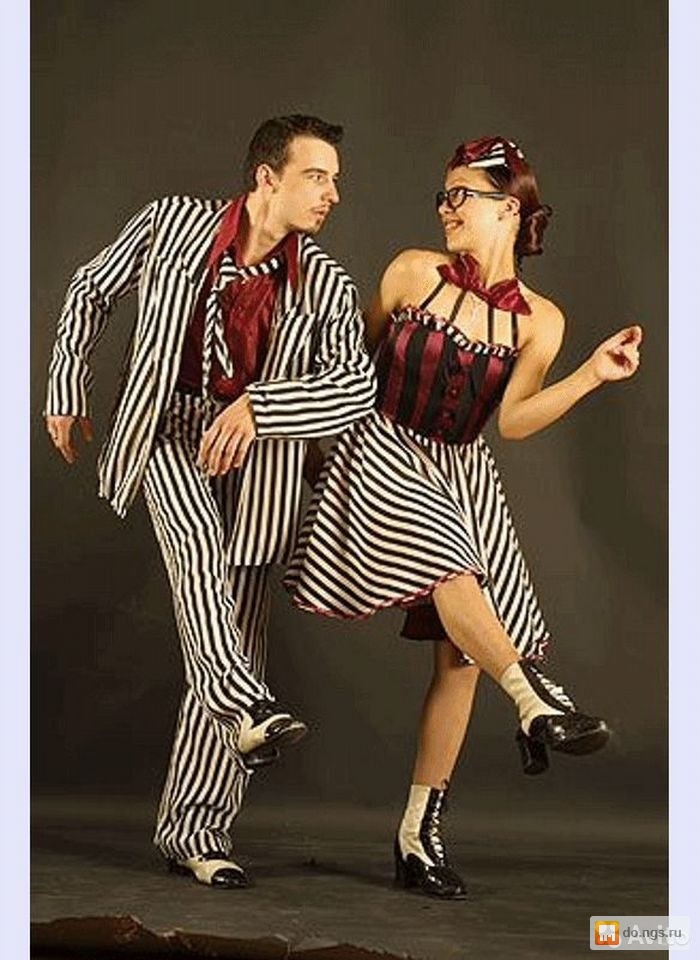 Check her stuff out because not only are there some cool designs and a lot of shirt styles, Krista is using the store to support the broader swing dance community!
Check her stuff out because not only are there some cool designs and a lot of shirt styles, Krista is using the store to support the broader swing dance community!
Get 10% off at Hepcatcorner.
Use the code RoamingLindyHopper
Repeat after me: vintage clothing is not necessary for evening dances. Even at the evening dances at big festivals, you will see everything from full vintage, to jeans and t-shirts, to all that is in between. While vintage clothing can look great, it’s often not made from the most breathable fabric. Remember, you want to stay cool and be comfortable while you’re dancing through the night.
If you are wanting to “dress to the nines” or at least pay homage to the 1930s when swing dancing was at its peak, there are also plenty of faux vintage looks that can bring to mind that era while being comfortable to dance in.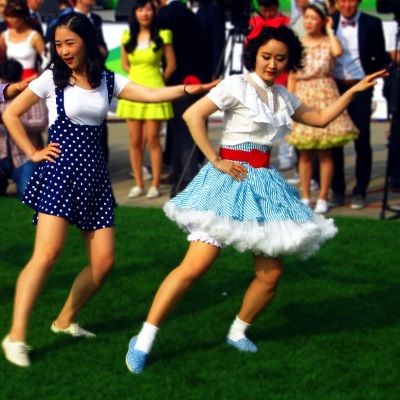 Even pairing a nice white t-shirt with slacks or a skirt can elicit nostalgia for the 30s/40s. Just check out the clip of White’s Lindy Hoppers from “Keep Punchin'” (1939).
Even pairing a nice white t-shirt with slacks or a skirt can elicit nostalgia for the 30s/40s. Just check out the clip of White’s Lindy Hoppers from “Keep Punchin'” (1939).
And below is a little more clothing inspiration from the late 1930s. As you can see, it would be pretty easy to pull off a similar look with modern day clothing. For example, a vest paired with a button-down shirt and slacks, or a slightly flared skirt with a fitted shirt can both bring to mind memories of the ’30s and ’40s without requiring you to hunt down vintage clothing.
A variety of swing dancing styles at Venice Beach in 1938 (no sound).A few other things to remember with your clothing:
- Avoid shirts with open backs, bell sleeves, and other attributes that make it possible your partner will accidentally get tangled up in your clothing.
- Be careful of adornments like beads and sequences which can potentially irritate your skin or your partners skin.
- Make sure your hair can’t serve as a weapon (such as long braids).
- Avoid loose necklaces that could potentially hit your partner during a turn.
I believe shoes are the most important part of a swing dancer’s wardrobe.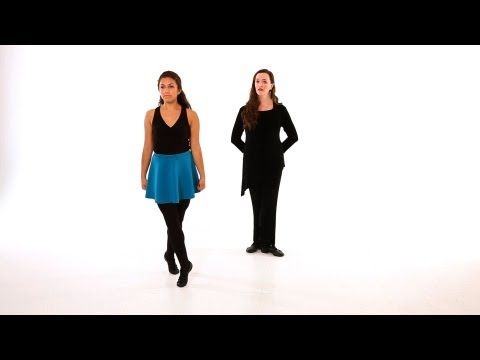 They can determine how easily you can move on the dance floor and how long you will be able to keep dancing before your feet get too sore. This could have easily been its own blog post.
They can determine how easily you can move on the dance floor and how long you will be able to keep dancing before your feet get too sore. This could have easily been its own blog post.
There are three main types of shoe soles that swing dancers wear: (smooth) rubber, suede (also called chromed leather), and leather. All of these can be worn to either lessons or social dances and each has their own advantages and disadvantages. As a new dancer, don’t feel like you have to go from 0 to 100 with your dance shoe game. Find a pair of shoes that you are comfortable dancing in and that don’t break the bank. As you continue to dance and talk to more experienced dancers, you can start to figure out what other types of shoes you want to try.
Smooth rubber soled shoes
Smooth rubber soled shoes are typically canvas or leather sneakers such as Keds, Converse, Vans, and even those cheap Target canvas sneakers if you just want cheap shoes to get your through your first lesson.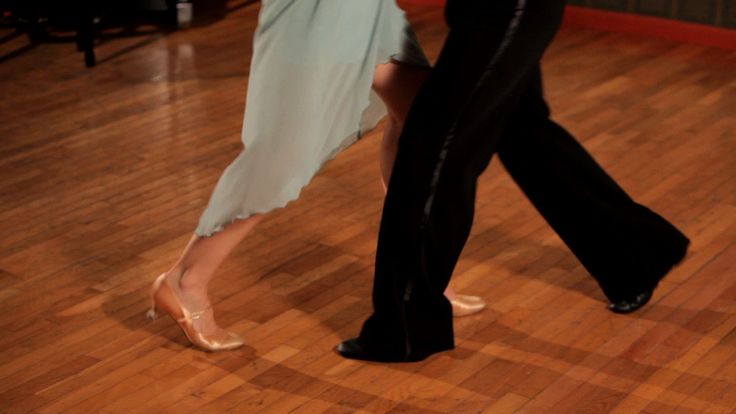 TOMS have also become popular.
TOMS have also become popular.
Pros: They’re generally affordable shoes. If you are brand new to swing dancing and are just going to a 4-week or 8-week lesson series, you probably don’t want to break the bank on shoes. I started out in Keds and still dance in them a lot for lessons and outdoor dancing when I don’t want to damage my nicer shoes.
Cons: They biggest con to rubber soled shoes is that you will stick on sticky floors or if humidity/ heat cause the floors to become “sweaty”. This can be dangerous for your knees. I would highly recommend getting sueded or leather-soled shoes if you’re learning Balboa. Once you get into moves where you’re pivoting, you’re going to want as little friction between yourself and the floor as possible.
My favorite pair of KedsSueded ShoesYou can either buy pre-sueded shoes (Aris Allens come to mind) or you can suede shoes you already own. I’ve taken the DIY route and sueded a few pairs of shoes, including some Keds, using Soles2Dance suede sheets.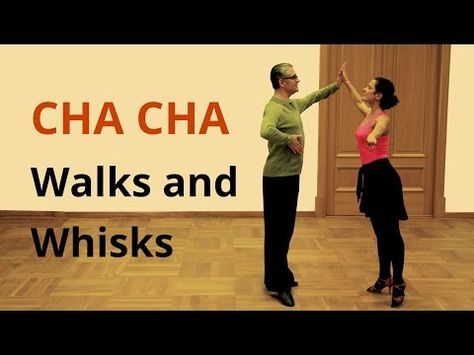 I had to cut out the shape of my shoe, but the sheets already have adhesive so all you have to do is trace, cut, peel off the protective paper, and stick it on the bottom of your shoe. Alternatively, you can go to your local cobbler and ask them to add chromed leather to the bottom of your shoes. Just make your cobbler understands what you are asking for.
I had to cut out the shape of my shoe, but the sheets already have adhesive so all you have to do is trace, cut, peel off the protective paper, and stick it on the bottom of your shoe. Alternatively, you can go to your local cobbler and ask them to add chromed leather to the bottom of your shoes. Just make your cobbler understands what you are asking for.
Pros: Suede gives you quite a bit more slide on the dance floor than your rubber soled shoes. This is especially important for swivels, lollies, and other moves where your foot is pivoting or sliding on the dance floor. It will also allow you to dance on stickier floors.
Cons: If you have sueded shoes you will want to invest in a shoe brush so you can occasional clean the grime off of them. Suede that has collected a ton of dust and dirt can be extremely slick on a fast dance floor, but your shoe brush will help you roughen them up again.
Not my finest work, but here’s a pair of heels I sueded with Soles2Dance suede.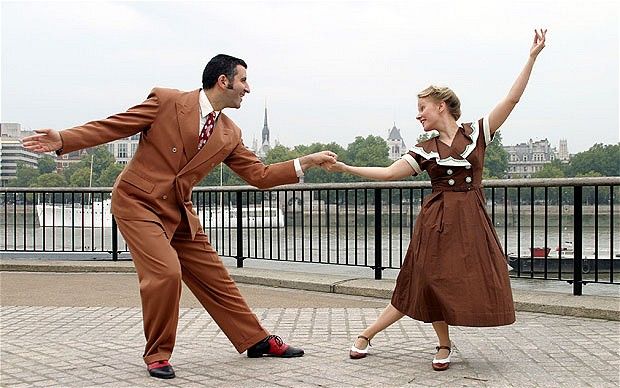
Leather-Soled Shoes
Some of my dance friends highly recommend learning to dance in leather soled shoes sooner than later. My favorite leather-soled shoes are my Charlie Stones. They aren’t technically dance shoes and aren’t as durable as Saint Savoy or Slide and Swing. But if you’re looking to try a feminine pair of leather-soled shoes that aren’t quite as pricey, I highly recommend Charlie Stones. Plus they have just a slight lift on the heel. For more masculine shoes, a lot of dancers I know use normal leather-soled dress shoes. Just make sure they’re comfortable and won’t give you blisters when you dance.
Pros: Like with suede, you’ll have more range of motion when it comes to pivots and slides. I’ve also found leather soles allow me to feel the floor underneath me better than suede. Suede sometimes “mutes” my pulse on the dance floor whereas leather gives me a “crisper” pulse and rhythm. That might just be me.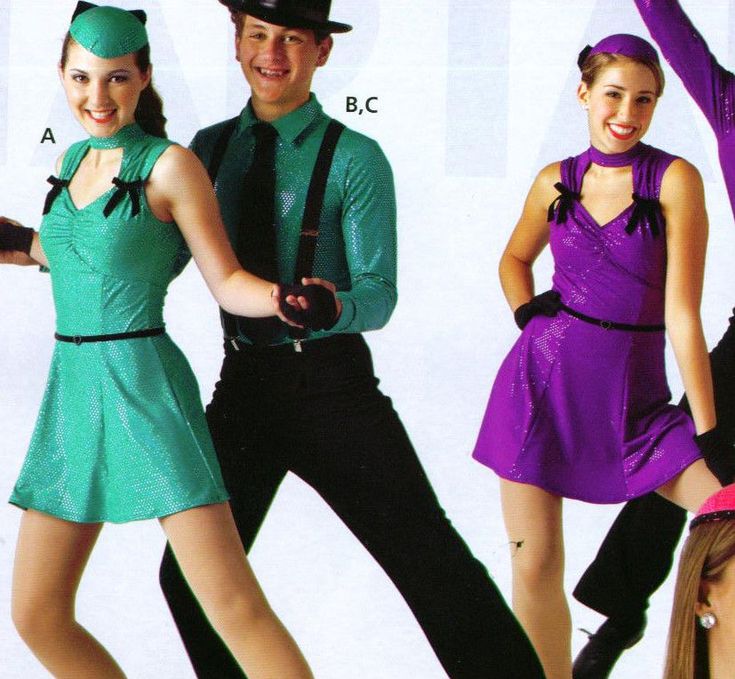 , though.
, though.
Cons: They take some getting used to, especially on “fast” dance floors.
One of my pairs of Charlie Stone ShoesImage Source: Tulsa Shoe RebuildersAdditional Shoe Tips:Support: You know best how much support you need in your shoes. If you have the opportunity to try on your potential dance shoes in a store, make sure you walk around in them. If they don’t have enough support but you want them anyway, just make sure they have room to add some insoles.
Bring More Than One Pair: If I’m going to a new venue or I know I’m going to be dancing for hours and hours, I’ll typically take two different pairs of shoes with me. One will have more traction in case the floor is a “fast” floor and one will be sueded or leather-soled in case the floor is sticky. On the rare occasion I want to wear heels, I will bring flat shoes to change into when my feet are too tired for heels.
Shoe Don’ts: If you like to wear heels, but very cautious. Most of my dancer friends who wear heels recommend not going much higher than a 1.5 inch heel. They also recommend choosing a chunky heel over a stiletto. Make sure to walk around in the shoes before committing to a night of dancing in them.
Most of my dancer friends who wear heels recommend not going much higher than a 1.5 inch heel. They also recommend choosing a chunky heel over a stiletto. Make sure to walk around in the shoes before committing to a night of dancing in them.
Also avoid athletic shoes. They are meant to grip the surface you are moving on and will hinder your ability to dance. Moves where you pivot on one foot will be especially dangerous to your knees if you are wearing athletic shoes with rubber that is meant to grip the floor.
HygieneWhile not clothing, hygiene is super important for an enjoyable swing dancing experience. Good hygiene can both boost your confidence and your partner’s comfort. Whenever I’m heading to lessons or a dance, I try to remember to put on fresh deodorant. I also recommend limit perfume, cologne, and other scented products since you never know if your partner is going to be sensitive to smells. If you’ll be at a dance for several hours, it also doesn’t hurt to bring and extra shirt or outfit in case you sweat through the one you came in.
Lastly, a swing dancers’ best friends/ accessories are the water bottle and a hand towel. A water bottle will help you stay hydrated throughout your lessons and while dancing the night away. A hand towel can be a life saver when you need to wipe away some sweat from your brow in order to feel refreshed for your next dance.
Hopefully you find this post helpful as you dress for your next dance lesson or pack for your swing dance adventure! For those of you who have been dancing for awhile feel free to provide any additional clothing advice you might have in the comments below.
Disclosure: Some of the links above are affiliate links. That means at no extra cost to you, I will receive a commission if you click through an make a purchase.
Advertisement
What to Wear to Swing Dance? (Explained for Beginners) – Dance Gaily
Swing is a social dance that involves high energy moves to jazz music.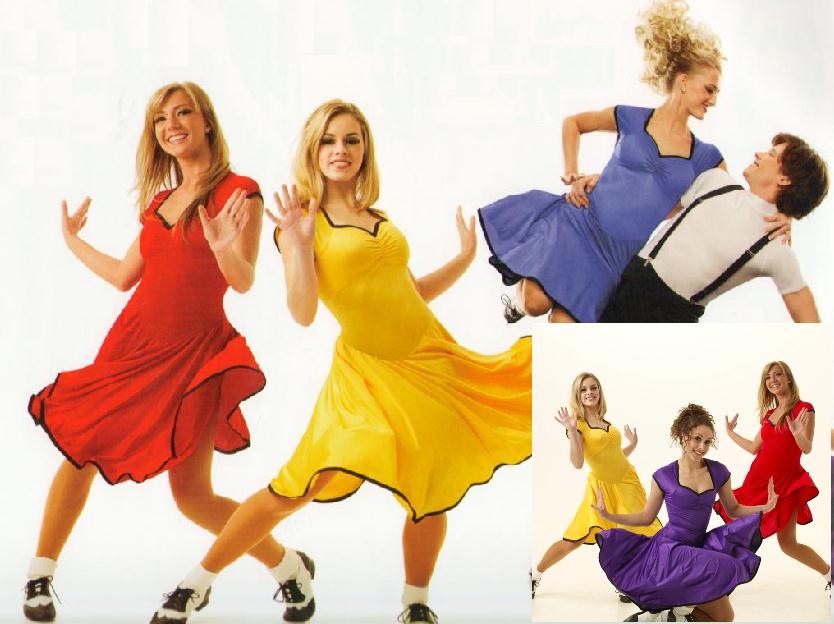 Knowing that you’ll be swinging and kicking up a storm may cause you to wonder about the best apparel choices to make for class.
Knowing that you’ll be swinging and kicking up a storm may cause you to wonder about the best apparel choices to make for class.
While some dance classes propose strict attire rules, this isn’t so with swing dance. But that doesn’t mean you should wear just anything. Due to high activity levels, it’s best to wear non-restricting, comfortable clothing that’s made from breathable fabric.
Stick around to learn more about the things to know about your attire for swing dance.
Suggested Swing Dance Attire
Whenever you sign up to learn a new style of dance you may have questions about the best way to dress for class. Ballet requires you to wear clothes that hug your body so that the instructor can see your clean lines. But is it the same for swing dance?
There are many different types of swing dance. West Coast Swing, the Lindy Hop, the Charleston, and East Coast swing are just a few. Because of the variations in dance style, there isn’t any formal attire required for swing dance classes.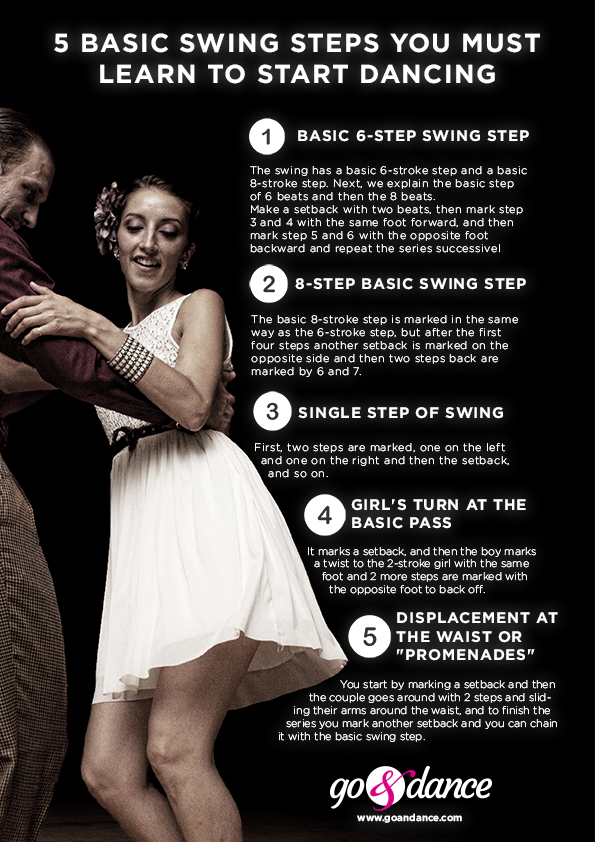 You wear what makes you most comfortable.
You wear what makes you most comfortable.
But there are some guidelines you’ll want to follow in order to keep safe throughout the class and have a more enjoyable experience.
Clothing Suggestions for Swing Dancing
You want to be able to comfortably move around when swing dancing. So your clothes should be roomy, but not so loose that they’ll get in the way.
Avoid tight clothes altogether. It will be difficult to catch on to swing dance moves if your range of motion is limited.
Period dress is okay, but not required. If you elect to wear vintage swing dance attire, be certain that it is breathable and will absorb your sweat.
Sweat absorption is better than sweat wicking. If you wear performance fabrics like athletic leggings or tank tops that wick sweat away from your body, then your sweat might land on your partner. That wouldn’t be cool and might make your partner feel uncomfortable.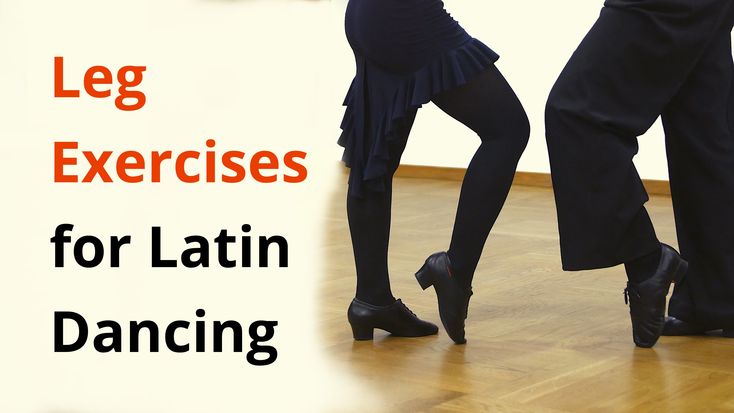
Casual dress is encouraged for dance class. This can include a flowy skirt with dance shorts underneath, or a pair of stretchy jeans with a tank top. Khakis and a polo shirt would be equally acceptable.
Swing Dance Clothing Tip: Aim for breathable fabrics like cotton and linen. Non-restrictive apparel will make the experience more enjoyable.
Shoes to Wear When Swing Dancing
Fully enclosed flats are best. Your shoes should also be comfortable enough for swift movements. You want to be able to make it through your class without foot discomfort or injury.
Low or medium-height heels are acceptable, but high heels can cause injury to both you and your partner. So if you must wear heels, go no higher than 1.5 inches and make it a low block heel.
Ideally, the soles of your shoes should be made of leather. Not only does a leather sole protect the dance floor, in comparison to rubber soles, leather soles help make your steps more stable.
You won’t feel any jerks to your limbs, which can help you dance longer. Being able to grip to the floor without abrupt stops or excessive gliding is key.
To this point, you’ll want to steer away from athletic shoes. Their soles are not designed to be worn on the dance floor. You will find it difficult to move your feet around because your shoe soles will cling to the floor. When your shoes grip the floor like this, not only can it lead to injury, you can create too much friction in your limbs, hurting your knees and ankles.
Swing Dance Shoes Tip: Avoid athletic shoes. Smooth rubber soles might be okay but suede or leather soles are ideal. Sandals, high heels, and open toe shoes won’t work.
Here are some examples:
Rubber Sole Shoes
Some people who are new to swing dancing start out with smooth rubber sole shoes, like Converse, TOMS, Keds, or Vans. If this is what you have on hand and you would prefer not to spend a ton of money on new shoes, then you can start here. The only exception is if the dance studio you attend has objections to rubber soles worn on their dance floor.
The only exception is if the dance studio you attend has objections to rubber soles worn on their dance floor.
Just know that you might experience some friction and your feet might stick to the floor at times. Both instances can cause you to feel more exhausted as you dance because your body is having to work harder to properly execute each move.
These Converse Chuck Taylor Shoreline slip-ons hug the foot in a comfortable manner. TOMS loafers like these have a cushioned insole and flatter bottom sole, which might make them more comfortable.
The benefits of rubber soled shoes are that they’re more affordable, and you’ll be making less of an investment up front. If you choose not to continue with swing dancing, then you probably won’t feel anxious about having bought more expensive shoes.
A disadvantage to wearing rubber sole shoes to swing dance class is that they might cause injury, depending on the type of floor you dance on.
Suede Sole Shoes
If you already own a pair of flat rubber sole shoes and want to prevent knee-jerking, then you might want to add suede to the sole.
Suede sheets exist for this reason. They’re literally a sheet of suede with strong self-adhesive backing designed to attach to the bottom of your shoe to convert it into a suede soled dance shoe.
This is a DIY route where you trace the sole of your shoe onto the sheet, cut it out, and then adhere to the sole of your shoe.
The primary advantage is that you can convert existing shoes instead of having to buy a new pair. Another advantage is that you can more easily navigate quick dance moves, which helps to protect your limbs as you dance.
One disadvantage is that these suede adhesives can collect a lot of dirt and dust, making them too smoothe. You’ll have to use a suede sole shoe brush to make the surface more gritty.
There are also suede sole dance shoes available. This particular pair is lightweight, and highly flexible.
Leather Sole Shoes
The best option by far if you plan to take swing classes indefinitely, is the leather soled shoe.
Opting to try leather soled shoes might even present you with more options. You don’t have to buy dance shoes specifically, but you will want the shoes to be comfortable and supportive, which dance shoes typically are.
Leather soles offer just the right amount of glide on the dance floor. But if you’re transitioning from rubber soled shoes to these, then you might notice more rapid movement across the dance floor. Just be aware so that you can make adjustments.
This Capezio Cadence Oxford has a leather sole perfect for swing dance. Its heel is only 1.25 inches.
Whichever pair of shoes you choose, always try them on prior to class to make sure you feel comfortable enough to dance around in them for a few hours.
Dress with Your Partner In Mind
Part of the enjoyment surrounding swing dance is that you experience it with a partner. It helps to wear clothes and shoes that won’t distract or frustrate you or your dance partner.
Uniquely Designed Apparel
Skirts that flare out too wide, beautiful blouses with an open back, strings and tassels that extend from a blouse or skirt. While nice for dinner or a night on the town, apparel such as this can be a deterrent when swing dancing.
With all the twists and hand to body contact, a partner’s hand might get tangled or scarred.
Projectile Accessories
Jewelry or accessories can hit your partner as you turn, making the experience uncomfortable for you both.
One night my cross body bag annoyed my partner and me. I had to repeatedly adjust it, and my partner had to keep dodging its impact every time I swung around. It was a total nuisance.
Blinding Colors
In addition to wicking sweat onto your partner, wearing neon athletic gear can have an impact on your partner’s eyesight.
Bright colors combined with rapid movement can lead to a migraine headache. Keep the colors to more subdued tones.
Contained Hairstyles
Keep in mind that the momentum you generate can cause your hair to swing along with your body. Flying braids and tresses can hit your partner in the face or cause their eyes to burn if hairs get caught in it.
Flying braids and tresses can hit your partner in the face or cause their eyes to burn if hairs get caught in it.
Try to style your hair in a way that keeps it close to your head, not causing any disruptions.
Here’s an example of what can happen when accessories are not secure. It’s a Lindy hop snippet from Hellzapoppin’ and this dancer handled it brilliantly.
Lastly, bringing a change of clothes and shoes with you is completely acceptable. Some dancers sweat out of their attire and need to change before getting back on the dance floor.
How to Dress for a Swing Dance: 4 Steps
In this article:
Steps
Additional articles
Swing dancing is a fun, energetic activity that is best done with the right footwear and clothing. Whether you're dressing in modern clothes for a regular dance or vintage style for a themed dance, you'll need to follow these tips.
Steps
-
1
Choose a comfortable pair of shoes with smooth soles. There are a variety of "swing dance" shoes that look like shoes from the 30s, 40s and 50s with smooth leather or suede soles that make it easier to roll and slide on the dance floor. Avoid rubber-soled shoes or tennis shoes because they stick to the floor. Pick a heel height that's comfortable for you. High heels are not good for quick spins, flips and jumps. For this dance, choose shoes with low heels or flat soles. Dance shoes are another handy option for casual dancing. nine0003
-
2
Women: choose comfortable, loose clothing. Women usually feel more comfortable in mid-length skirts and dresses or light cotton trousers. Don't wear denim, wool, or polyester, as these can get you too hot. Skirts should be knee-length or longer, but still allow freedom of movement for some of the "circling". Wear cycling shorts, leggings, or a swimsuit under a skirt or dress if it rises too high or rides up.
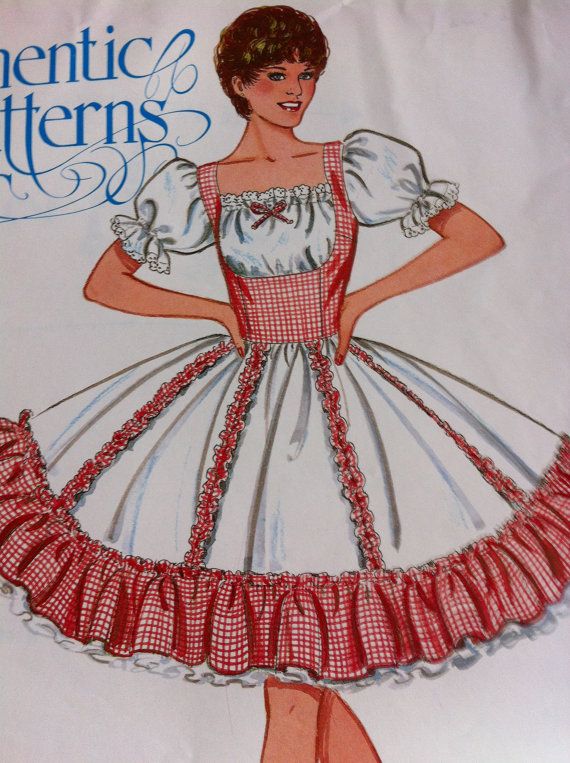 nine0003
nine0003 -
3
Men: Wear a comfortable button-down shirt and trousers for a semi-formal look, or a T-shirt and trousers for casual dancing. Don't wear jeans. Wear tank tops and bring extra shirts with you to change in case you get really sweaty.
-
4
Use deodorant or antiperspirant before dancing, but do not use perfume or strong-smelling aftershave. nine0018 Dancing with a partner who smells bad is the worst. Do your best to stay fresh.
Advertising
Advice
- If you have long hair, tie it back in a bun or ponytail. If you don't braid your long hair, you can punch your partner in the face. Please remove your hair.
- Wipe sweat with a handkerchief or towel. Some wear sweatbands or tie bandanas around their heads to absorb sweat. Bring spare shirts with you to change. nine0020
- If you are going to themed events of the 30s, 40s or 50s, then you will need to dress up for the occasion.
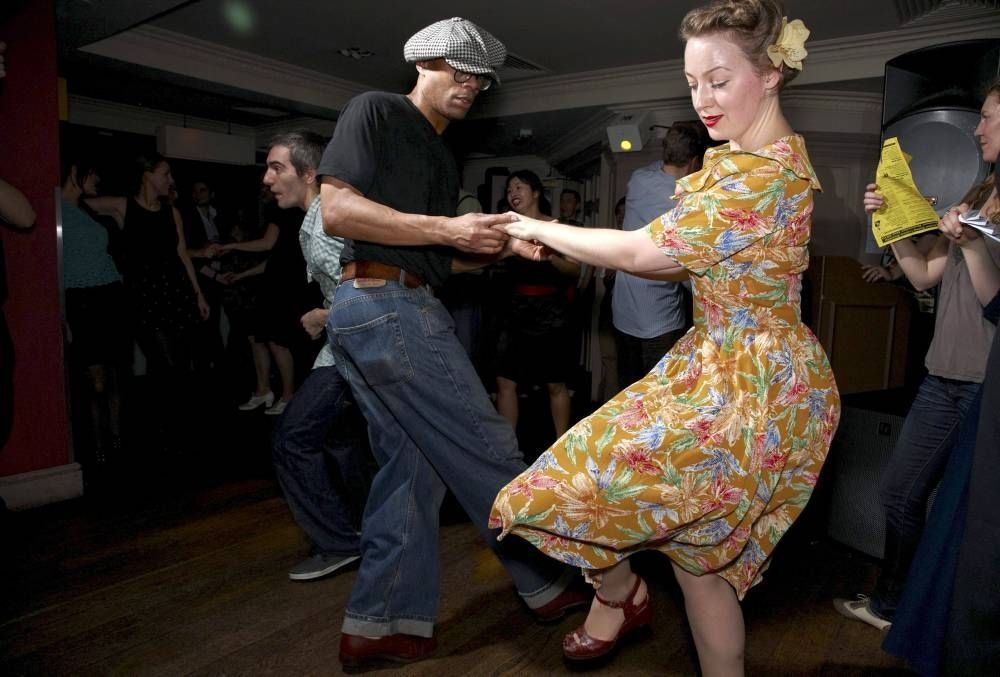 Explore the fashion trends of the period and dress appropriately. In general, during these times, women wore medium-length skirts and wide, puffy blouses or dresses (50s). The men wore suits, trousers and shirts.
Explore the fashion trends of the period and dress appropriately. In general, during these times, women wore medium-length skirts and wide, puffy blouses or dresses (50s). The men wore suits, trousers and shirts.
Advertising
Warnings
- For women: if you wear vintage swing dance clothes, be aware that they are tight around the torso and arms. You will not be able to make the same high and wide movements with your hands as in modern clothes. You may need to change your dance style when choosing vintage clothing. nine0020
- Men: fun to wear stylish hats, flat caps and bowler hats for themed dances. Just remember to take them off before dancing.
Advertisement
About this article
Other languages
Wiki How to Dress for Swing Dance
Swing dancing is a fun, energetic activity that is best done with the right shoes and attire. Whether you're dressing in modern clothes for a regular dance or vintage style for a themed dance, you'll need to follow these tips.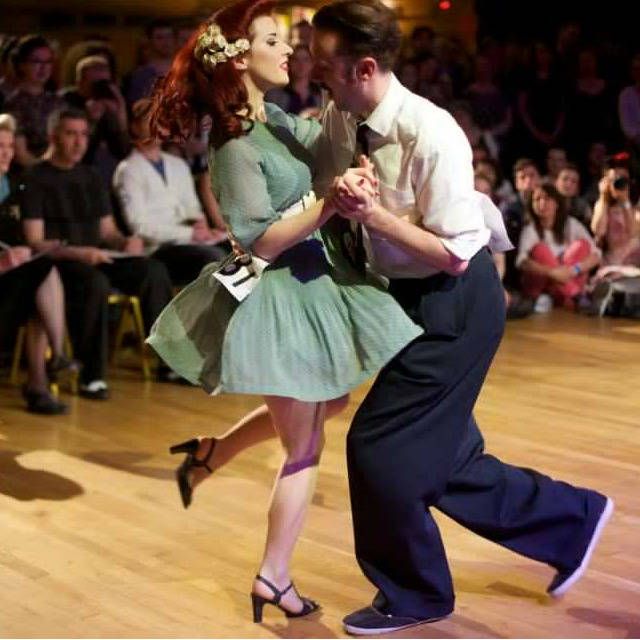 nine0003
nine0003
This page has been viewed 7387 times.
Advertising
Swing clothes - Dmitry (mitjaj) Martirosov
What to wear is a very important issue for dancers.
Each direction of dance has its own subtleties in the choice of clothes and shoes, which are influenced by: style features, which are usually called a unique technique, historical traditions in this community.
Both of these factors are closely related and influence each other. Somewhere a certain manner of movement was formed due to the fact that at some period when a particular style changed especially strongly, certain things were in fashion, or vice versa, some features of the technique influenced clothes. nine0003
Important! Don't try to figure out all the subtleties and diversity "on the beach" - it's not possible! For the first ten lessons, any sneakers, T-shirt and pants are suitable. Start dancing, and you'll figure out the clothes a little later. You can join the general trends only by plunging headlong into the party.
You can join the general trends only by plunging headlong into the party.
How to choose clothes?
For the first lesson, any sneakers, pants and T-shirt will suit you! After a few months of regular parties, you will understand what exactly suits you and fits into the party trends. If not, each of them has their own style consultants to help you. nine0003
← Endless Argument - Naphthalene vs Straights
Endless dispute - Naphthalene vs Naturals
What better conveys the spirit of the Lindy Hop - grandmother's dresses or ripped jeans?
The subtleties of style in clothes
Usually dancers from the West Coast Swing party say that they dance in the most ordinary clothes, but there are still subtleties here. Once, I went to a party in wide trousers, sewn according to the pattern of the 40s ready and the most ordinary shirt. I was standing at the entrance when I entered the hall...
Looking good is not vanity, but politeness!
The way your clothes look affects your dance more than you think.
